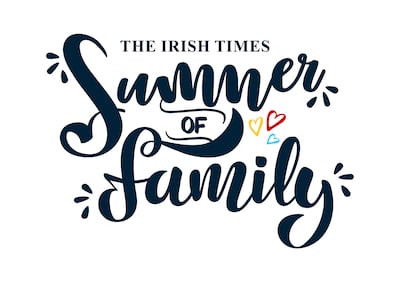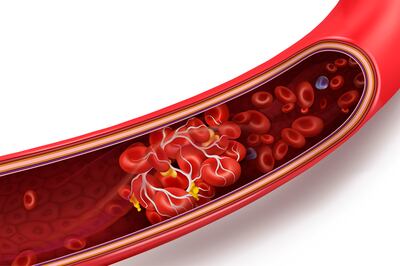Aimee Good was seven weeks pregnant when she was diagnosed with cerebral venous sinus thrombosis (CVST), a clot in the brain. She had been suffering from severe headaches since November 2022, but when multiple GP visits and prescribed antibiotics proved to be ineffective, she went to A&E.

“I was very specific with my symptoms,” says the 34-year-old Dublin woman. “I said I had shooting pain if I coughed or if I sneezed, and I was doing that a lot because I had a head cold. I had no energy, I would cry myself to sleep. I wanted to bang my head against the wall to relieve the pressure. My forehead and my temples were just in constant pain, there was no break from it.”
After 27 long hours of waiting in the emergency department of Beaumont Hospital, she was given a diagnosis that completely “knocked down” her confidence. “I was just sitting on the [hospital] chair and the stroke physician introduced himself. He told me I had a blood clot in the brain and asked if I had any questions.
“I don’t know how anybody digests that kind of thing, but to be honest, I actually felt in a way relieved, because I was in so much pain, so I kind of thought, ‘well, at least now I’ll be looked after and my pain will go away’.”
READ MORE

CVST is one form of blood clot or venous thromboembolism (VTE) – an umbrella term that includes blood clots that occur in the lower limbs of the body (deep vein thrombosis), and clots that have travelled to the lungs (pulmonary embolism). Both can be life-threatening, and together, they’re linked to 9 per cent of all annual Irish deaths, according to a 2018 report by the Health Service Executive (HSE).
“Symptoms of a deep vein thrombosis such as pain, swelling and/or redness of a leg can precede a pulmonary embolism,” says advanced nurse practitioner in coagulation and VTE in Beaumont Hospital, Sarah Garvey. “In most cases, a blood clot forms in a vein due to some combination of an increased clotting tendency in that person, reduced blood flow in that vein and or damage to a blood vessel wall. Your risk is also increased if you or a family member have previously suffered from a blood clot.”
Aimee was put on anticoagulant injections for the duration of her pregnancy and her headaches persisted for approximately four months. She is still on critical illness leave from work due to the shock of what happened, as she says she wasn’t aware that pregnancy increases the risk of clotting. “I had obviously heard of blood clots,” she says, “but I thought it was something that led maybe from a long-haul flight. I didn’t know it was something that could happen during pregnancy.”
Eve Cleary suspected she had a clot before her discharge from University Hospital Limerick in July 2019, according to her mother Melanie Sheehan. “When Eve died, we actually found texts on her phone she sent to work, saying, ‘I think they [the doctors] think I have a blood clot’, so obviously it was in Eve’s head.”
Eve went to the emergency department of the Limerick hospital two days after she fell and injured her leg. She was sent home, despite having a numb and swollen leg. “She had been complaining of pins and needles while she was on the [hospital] trolley, and before we left, she had said she couldn’t feel the back of her leg any longer and she expressed that. But she was told to go home and rest and she’d be fine,” says Melanie about her then 21-year-old daughter.
At home, she suffered two cardiac arrests. “She came through the first time, she spoke to me and said that she was very sorry. I think she knew she was going to die.
“I was begging her to please get up and we’d switch places, and she just kept shaking her head no. And then she put her hand on my face and just said, ‘I’m sorry mam’, and then I kind of knew when she turned and closed her eyes that that was it.”
Sheehan says the doctors at the hospital worked on her daughter for 90 minutes before she was pronounced dead. The postmortem examination showed she died of a clot in her lung.
[ ‘A massive blood clot had passed through my heart, entering both my lungs’Opens in new window ]
Melanie, her husband and regional executive officer of HSE Mid West Sandra Broderick are now working on a project, “Eve’s Protocols”, to help with preventable deaths related to blood clots. “What we’d like to see is when patients go to triage for the drop down to come on the screen like they have in the NHS for thrombosis,” says Melanie. “The protocol drop down would determine a patient’s risks from triage on and cannot be bypassed off the screen until filled in.
“Every patient who is identified as having risks would be given thrombosis stockings until seen by a doctor who would determine if that patient needs anticoagulant. With the amount of patients on trolleys, particularly in the midwest, it is crucial that Eve’s Protocols are implemented as soon as possible to prevent any further needless deaths.”

This push for change is a major goal for non-profit Thrombosis Ireland which was set up by survivors Ann Marie O’Neill and Shay Kearney in 2016 to support patients.
“We need a national awareness campaign. Like the stroke campaign, we need people to understand what heightens the risk of getting a blood clot and then what the signs are and what to do if they suspect it,” says CEO Ann Marie O’Neill, “so everyday household information, we need it to be that aware because maybe a little bit of information could save somebody’s life”.
- Sign up for push alerts and have the best news, analysis and comment delivered directly to your phone
- Join The Irish Times on WhatsApp and stay up to date
- Listen to our Inside Politics podcast for the best political chat and analysis





















